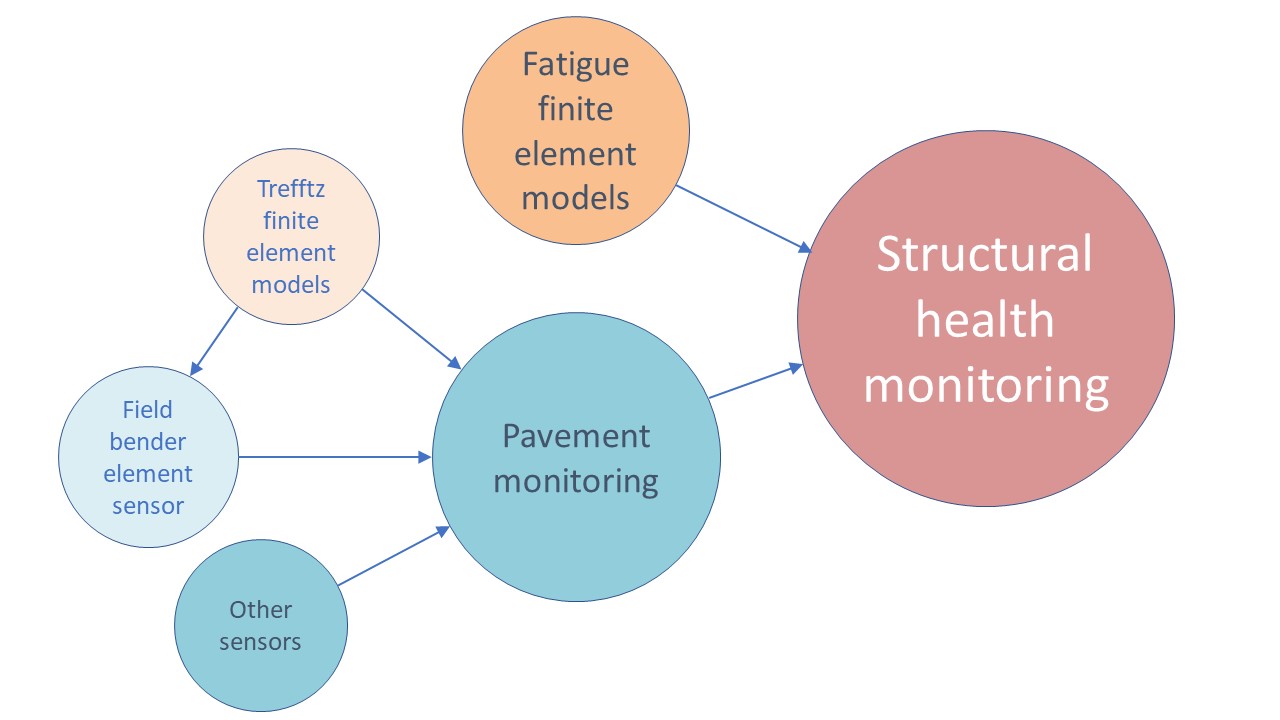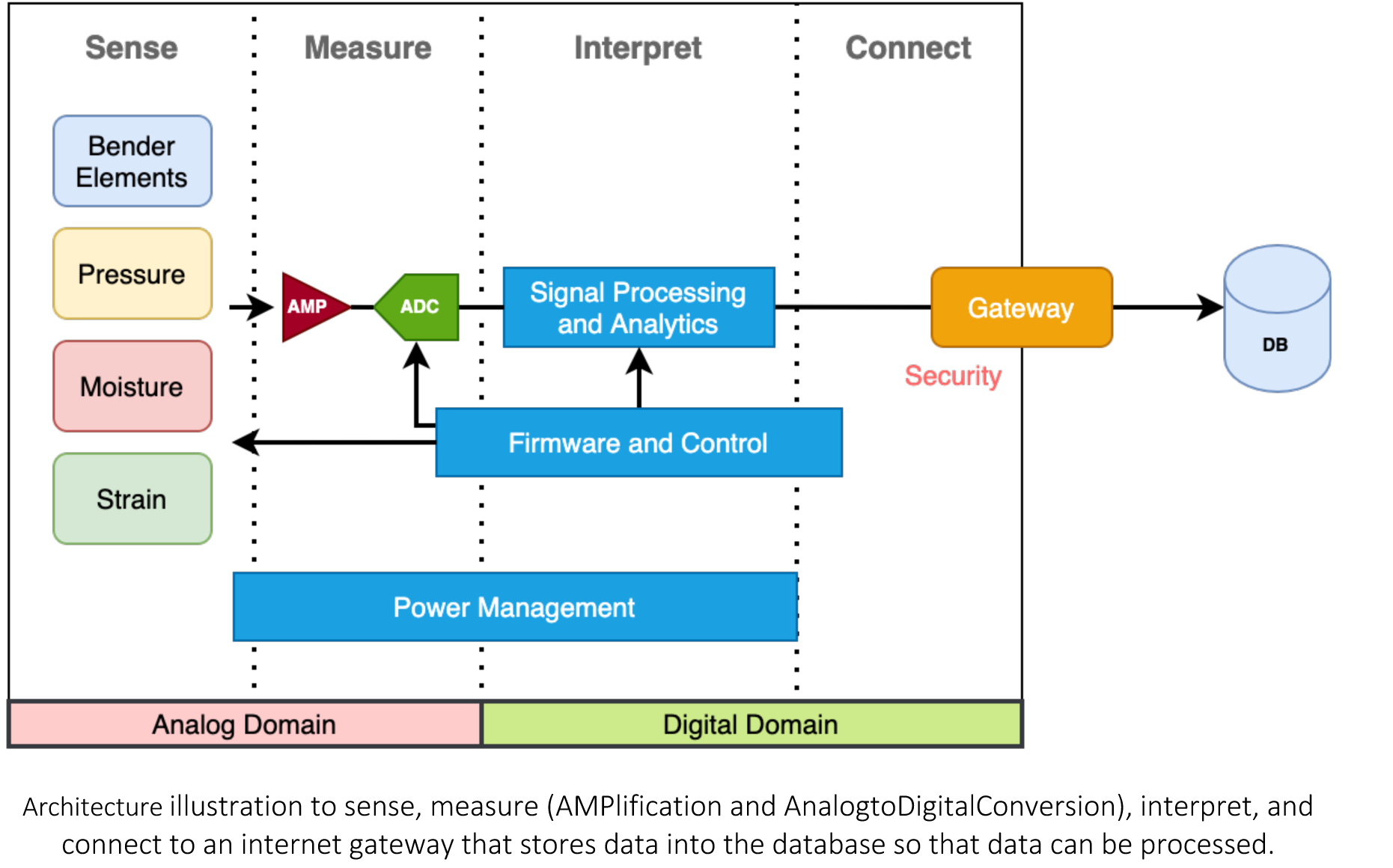Description
Project data
Title: Intelligent health monitoring of road infrastructures using bender elements embedded in pavements
Principal Investigator: Ionut Dragos Moldovan (Engineering Faculty, Lusófona University)
Co-Principal Investigator: José Coelho das Neves (Instituto Superior Técnico, University of Lisbon)
Total funding: €249,865.58 (funded by Fundação para a Ciência e a Tecnologia, grant 2022.06879.PTDC)
Starting date: March, 12th, 2023
End date: March, 11th, 2026
Scientific description
The expansion of road networks in regions with poor soils has led owners to call for improved and continuous monitoring solutions. Accurate and timely geotechnical information enable better planning of retrofit interventions, with huge savings to the €30B/year EU highway maintenance budget.
Currently, most pavement monitoring solutions are based on periodic inspections of the asphalt course. However, the pavement foundation (subgrade, capping, sub-base) and the granular base course are essential components of the road structure. The foundation acts as a construction platform for the upper layers and must sustain the traffic loads once construction is completed. Likewise, the base course sustains the construction of the asphalt course and spreads the loads to reduce the stresses in the foundation. The failure of the base course will inevitably compromise the pavement and is much harder to detect visually than the damage of the asphalt course.
Despite the importance of the unbound granular layers (sub-base and base), little quality assurance testing is carried out on the finished product and on its long-term behaviour. Continuous monitoring techniques have been proposed, but they are still in an incipient phase. Instrumentation embedded in the granular layers includes strain gauges, to monitor their deformation; pressure cells, geophones and LVDTs to support the assessment of the stiffness; and temperature and moisture probes for ancillary measurements. No continuous monitoring technique has been reported to directly measure the dynamic stiffness of the geomaterial, despite this being highly relevant for damage detection.
The objective of this project is to develop a new embedded sensing device, based on the bender element technology, for the continuous monitoring of the dynamic stiffness (shear modulus) of unbound granular layers, and to use it, along with conventional sensors and advanced numerical models, to fuel machine learning algorithms for continuous monitoring of pavements.

The bender elements developed in this project enable the continuous measurement of the stiffness of the granular layers during construction, ensuring that pavement design requirements are met, and during the service life of the structure, enabling retrofit actions in the early stages of damage. They can be embedded in any layer with minimal disturbance, and their signal analysed automatically to extract the shear modulus of the layer. They can be coupled with conventional sensors to get a comprehensive picture of the condition of the layer, and the data analysed in real time by machine learning algorithms for damage detection. Advanced numerical models will help machine learning algorithms distinguish the between gradual loss of stiffness and/or gradual increase of permanent deformation under cyclic loading (concept of fatigue) and the sudden, catastrophic deterioration of the geomaterial (concept of failure). A damage progression prognosis toolbox is developed to compare the expected and measured rates of degradation of the geomaterial and estimate its future condition.
Innovative coupled numerical-experimental techniques are used to power up these solutions. Hybrid-Trefftz finite element models are ideal for simulating the propagation of high frequency shock waves through geomaterials, as typical of bender element experiments. They are used to optimize the design of the bender element sensors and for the automatic interpretation of the output signal. A non-linear finite element model capable of simulating the strain accumulation and stiffness degradation under cyclic loading is used to inform machine learning algorithms on the expectable fatigue degradation patterns.

This research is in line with the Smart Road concept and has high commercialization potential. Embeddable bender element devices are manufactured, tested, and patented. A structural health monitoring toolbox is bundled with the sensors and the acquisition board for straightforward deployment. It can also be integrated in Pavement Management Systems to enable the early warning against failure events and the planning of retrofit interventions, with large financial gains and enhanced asset sustainability.
The project combines complementary competences and equipment from 6 research institutions in Portugal, Spain and USA. It is rooted in the CEN-DynaGeo Project, where hybrid-Trefftz finite elements were used for the optimization and interpretation of bender element tests in the lab. The team is experienced in finite element models (I Moldovan), structural health monitoring (E Figueiredo), pavement engineering (J Neves, V Antunes), dynamic behaviour of geomaterials (A Correia, M Parente, M Azenha), sensing and electronics (J Moutinho, M Martins). Consultants M Arroyo (Spain), E Tutumluer (USA), C Chiorean (Romania), and S Fontul (Portugal), and are experts in bender elements, their field application, computational geomechanics, and transportation engineering (respectively). Three young researchers will be engaged.
- Home
- Description





Avenida do Campo Grande,
376 1749-024 Lisboa, Portugal
Tel.: 217 515 500 | email: info@ulusofona.ptPorto
Rua Augusto Rosa,
Nº 24, 4000-098 Porto - Portugal
Tel.: 222 073 230 | email: info@ulusofona.pt
Produção Multimédia © 2023 COFAC.